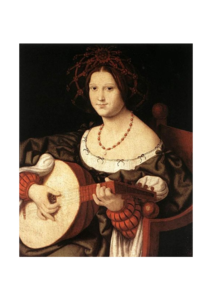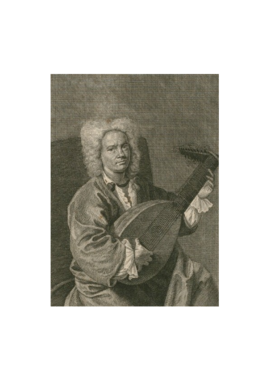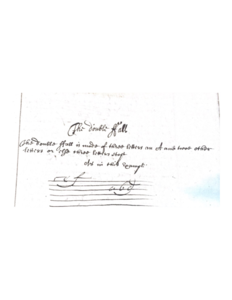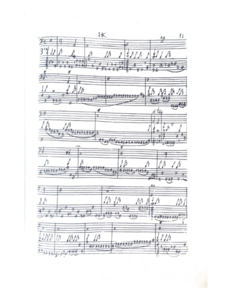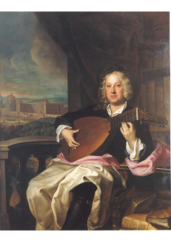5. Lowering the String Tension and its Benefits
5.1. Solving the Odds
The problem stated by Damiani, that lutes produce only hard sounds with the thumb stretched out, has to do with the fact that all four fingers consequently pluck much closer to the bridge than when the thumb is tucked in. As it is for all string instruments, the closer the instrument is played to the bridge, the harsher the timbre will become. When I played with stretched-out thumb, the bass strings felt too flabby and unresponsive, and the tone color was harder to control. This was due to the thumb being too far from the bridge compared to Serdoura's method, or other Thumb-out techniques.
One of the important matters to consider as we approach string tension and string material for the bass strings, is whether to employ tirando (fingertips rising after plucking) for the thumb or not. While there are many primary sources that indicate positioning of the thumb, there are not many sources that mention instructions on how exactly the thumb should move. Treatises that do explain the movements of the thumb always advise rest-strokes (thumb falling and resting on the adjacent string after plucking a string, as explained by Piccinini) and say that it should be applied for every thumb stroke on the bass strings that are not p-i alternation47. A survey of the literature did not reveal any indications or suggestions of tirando for lutes. In addition to the fingermarks near the bridges of original lutes, the fingermarks on the soundboard behind the bass strings provide further evidence of thumb rest-strokes49. These fingermarks indicate the way that the owners of the lutes plucked with their thumb, very much toward the soundboard using rest-strokes. Such way of playing on modern lutes would cause excessive brightness to the sound as they are often strung with closed wound strings, if not nylon. Many lute players today apply tirando on any given legato moments and reserve the rest-stroke only for specific base notes, for example for giving accent. Peruffo’s research shows that wound strings did not exist untill the 1650’s and that loaded gut strings were used for the bass strings. Even after the invention of wound gut strings, his research suggests that loaded gut strings continued to be preferred instead50. In addition, rest strokes are what enables the course-seperating technique explained in Burwell Lute Tutor (cf. chapter 3.) Such way of plucking is almost impossible with tirando. I have come to believe that tirando was rarely used for plucking the lute with the thumb, and rest-strokes were used generally. This reveals why lute players continued to prefer loaded guts historically, and why many lute players today, including myself, face trouble to control the strings with the thumb when played with Thumb-out – string material, string gauge and applied technique need to agree in order function best.
5.2. Paintings
In this painting by Andrea Solario (figure. 5 51) the lute player has both the ring and the little finger placed on the soundboard. Her right hand is placed around the rose, and positioning of her middle finger and index are similar to those of the example by Serdoura (cf. figure 2). See figure 6 52 for another example of a ring finger placed on the soundboard.
The right hand of Adam Falckenhagen (figure 7 53) is positioned very close to the bridge, with the little finger placed right in front of the bridge. It can be observed that he plucks with the littlefinger side of the fingertips and he angles the lute laterally, which are similar to Serdoura’s method.
In his portrait (figure 8 54), Ernst Gottlieb Baron is playing a lute that is smaller than what is depicted in Falckenhagen’s. Although the bridge is not visible, it can be assumed from the great distance between his little finger and ring finger that he has his little finger placed over the bridge, as he instructs in his book55.
5.3. Ornamentations
Another parameter of lute playing that lower string tension will benefit is ornamentation. Ornaments can consist of many different aspects; most of them concern slurring with the left hand, but also diminutions. Regarding diminutions, Piccinini makes an interesting statement that he found a way to play diminutions very fast, which is done by moving only the right index finger up and down; generally known as dedillio stroke for vihuela da mano. This is very rarely done today – I myself have never witnessed anyone applying this technique on lutes and chitarroni – but this way of playing certainly does become easier when the strings tension is lower. The strings almost do not sound when this is done on modern lutes. Secondly, playing slurs also becomes a lot easier on chitarrone when string tensions are lowered. Slurs on chitarrone can contain more than 10 tearing of notes after one right-hand stroke (see figure 956.)
Though not as extensive as it is in music for theorbos and chitarroni, slurs are used for lutes as well, specifically for ornamentation. What becomes difficult is when the ornament contains only hammering of the notes and no tearing (only ascending notes), such as what Mersenne calls “verre cassé,”57 or what Mary Burwell explains as “The double fall” (see figure 1058.) The Burwell Lute Tutor suggests that ornaments such as the double fall should be played with the left hand softly touching the strings59, which also supports the idea that the strings did not have extremely high tension.
39 Paul O’dette, “Some Observations about the Tone of Early Lutenists” in Proceedings of the
International Lute Symposium Utrecht 1986, ed. Louis Peter Grijp and Willem Mook
(Utrecht: STIMU Foundation for Historical Performance Practice, 1988), p. 86-91.
40 Mace 1676, p. 69-70.
41 Mace, 1676, p. 41.
42 Mimmo Peruffo, “Lute in its Historical Reality.” October 2008, p. 69.
43 Peruffo, 2012, p. 7.
44 Peruffo, 1993, p. 123-130.
45 Peruffo, 2008, p. 70-73.
46 Smith, 1976, p. 121.
47 Peruffo, 1993, p. 146.
48 Buetens, 1969, p. 9 and 11. Mace, 1676, p. 72.
49 Peruffo, 2008, p. 71-76.
50 Peruffo 1993, p. 118.
51 Solario, Andrea. The Lute Player. C. 1510. Galleria Nazionale d'Arte Antica, Rome; Palazzo Barberini.
52 Kupecky, Jan. Johann Adam von Questenberg, c.1718. Private collection. Prague.
53 Portrait of the lutenist, Adam Falckenhagen (1697-1754). Stör, Johann Willem. N.d. Herzog August Bibliothek, Wolfenbüttel.
54 Portrait of the lutenist, Ernst Gottlieb Baron (1696-1760). Stör, Johann
Willem, 1727. Cover page of Historisch […] Untersuchung des Instruments der Lauten, 1727.
55 Smith, 1976, p. 121.
56 Kapsberger, 1640, “Toccata 3za” p. 11.
57 Mersenne, 1957, p.110.
58 Mary or Elizabeth Burwell. The Burwell Lute Tutor, c. 1660-1672. MS. Owned by Capt.
Anthony Hamond, Ingham, Norwich, fols. 34 - 34v. Reprint: Leeds, Boethius Press, 1974.
59 Dart, 1958, p. 24.
